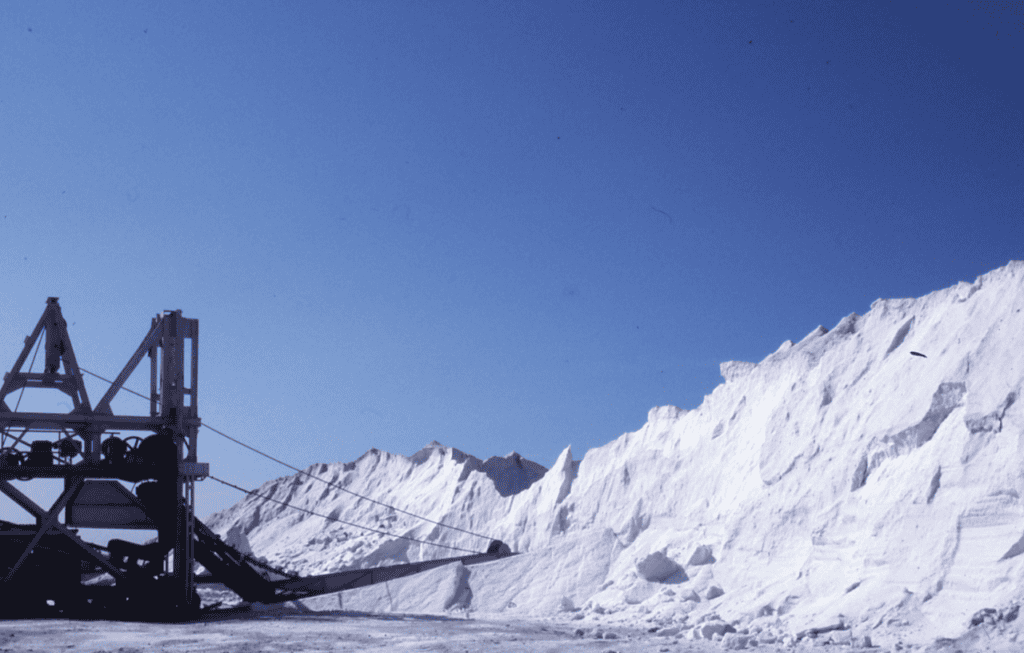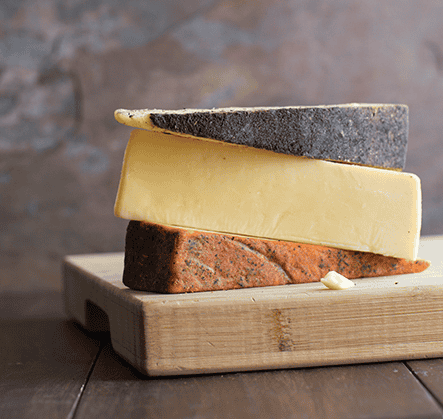Why cheese’s most elemental ingredient flies under the radar (and why it deserves our attention)

Worth Your Salt
Last fall, I found myself touring some of the most prestigious cheesemaking facilities in Europe (and, arguably, the world). In a jaunt I dubbed my “Fritzaly” trip, I zipped in a tiny Fiat from France to Switzerland to Italy, stopping to visit makers along the way, and at each of these facilities I encountered some version of the same thing: giant plastic sacks of industrial salt. I pressed my tour guides about these bags—their provenance, their grain, the process behind their selection—but was met with blank stares every time. These were not mass producers, mind you, but the cream of the artisan crop. World famous, award- winning makers for whom milk is of salient importance, to the point that they have actual laws governing what their cows eat. And yet this humble white grain, poured into vats in enormous quantities, was largely an afterthought.
“I can honestly say that salt is about the least interesting aspect of our work,” says Zoe Brickley of Jasper Hill Farm. Though she did mention a few experiments—one involving an iron- rich red salt to encourage flora growth; another an accident that occurred when a supplier changed their grain size, resulting in faster uptake and massively oversalted batches—she had little to say on the subject.
For an industry obsessed with traceability, we spend woefully little time on one of cheese’s primary ingredients. “Salt isn’t something that folks talk that much about,” says Rachel Fritz Schaal, who, with husband Peter Dixon, runs Parish Hill Creamery and gives joint talks about salt for the American Cheese Society. While most makers use refined salts, Parish Hill employs unrefined solar evaporated sea salt from Maine Sea Salt Company in their makes—a salt that’s eight to 12 times more expensive than industrial offerings. “We decided it was worth it,” Fritz Schaal says, “[because] we wanted to use salt that would be akin to what would have been used before.”
This if-it-ain’t-broke ancestral trust pervades our industry, but sticking with the old doesn’t always mean using fancy salt. A recent study comparing Camembert PDOs made with refined, baked, sun-dried, and Himalayan rock salts found that the standard refined variety resulted in the best-tasting wheels. And experimenters must be careful—Rispens Gouda ran into trouble using mountain rock salt that turned out to contain radioactive materials as a result of pollution and leaching.
Despite proximity to the Great Salt Lake, Britton Welsh of Beehive Cheese uses a mix of industrial and local salts in her makes. “At the end of the day,” she says, “our decisions are made based on quality.” To learn more about how cheesemakers choose (and use) salt across the globe, read on.

Barks, Brines, and Washed Rinds
Not that I’m complaining, but have you ever wondered why cheese is dunked in, massaged with, or raggedly smeared by salt at every turn? It’s all about microbial growth. Cheese wouldn’t exist without microbes, but it takes a deft hand to allow only the good ones in. For keeping the bad ones at bay, salt is just about the best cop we could ask for—and it takes the form of a lot of rind manipulation.

Brines stabilize young wheels. High-sodium atmospheres reduce moisture and control unwanted bacteria and mold growth. Like a sourdough starter, these brines select “good” bacterial cultures that contribute to a cheese’s flavor, making them a bit more like bouncers than cops. In many facilities, these rich, storied brine baths are reused for, get this, decades (with salt regularly added to maintain 18 to 24 percent salinity).

Barks introduce extra risk, as their wood can carry untold amounts of foreign bacteria. They are, however, necessary to hold soft, young wheels together, so cheesemakers soak these strips of wood in a salt brine first to not only soften but also sterilize them.

Washed rinds are a response to bad bacteria, and one that introduces the sticky, stinky brevibacterium linens instead. Legend has it that Benedictine monks invented this style by “cleaning” their moldy wheels with rags dipped in sanitizing salt water or alcohol. (Imagine using your nearest dish towel to wipe a fuzzy blue bloom off a dinner roll and you’ve pretty much got the picture.)

Salt in Rennet Making: True Beginnings
Traditionally, milk is separated into curds and whey using animal rennet. To make this essential ingredient, the dried and cleaned fourth stomach (abomasum) of a young calf is sliced into pieces and submerged in salt water, then left to rest for several days. “Salt is added solely to preserve the coagulating power of rennet long term,” says Trevor Warmedahl, a researcher who studied rennet on a Daphne Zepos Teaching Endowment in 2022. This isn’t necessary if you’re making rennet every day, though—most artisanal rennet production Warmedahl witnessed forewent the salt bath in favor of more frequent production.

Salt Rules
While American frontiersmen are free to use anything from Maldon to Morton in their makes, European makers are often governed by strict consortium rules dictating salt type, origin, and size. Le Gruyère AOP, for instance, must be made with salt under .25mm grain size hailing from the Bex Salt Mines in the Vaud Alps. “Switzerland’s salt was gifted to us by the primordial ocean that evaporated 200 million years ago,” says Denis Kaser, Head of International Marketing for Le Gruyère AOP, “[leaving] behind layers of salt up to 164 feet thick in the Swiss Plateau.”
Le Gruyère AOP also requires that brine baths remain at a consistent 22 percent salinity level. Wheels must be salted daily in their first eight to 12 days, then rubbed with salted water “to induce the forming of a crust-like rind,” according to AOP regulations. Makers rarely stray from this, nor would they want to. According to Kaser, these rules “let the milk do the talking.”
Salt Local
On our tabletops, we’re living in a local salt renaissance–but we aren’t seeing Amagansett Sea Salt Co. rinds and Jacobsen Sea Salt Co.-infused brine baths in our cheeses just yet. So, who is using their local salts?

Northeastern Italy’s Caseificio Mambelli produces several cheeses with Salina di Cervia harvested from the Adriatic Sea (and even includes “Al Sale Doce al Cervia” on their labels).

On the island of Lesbos, Tastanis Feta uses salt from the Kalloni Salt Pans. This salt also occurs naturally in the island’s soil, meaning the grazing sheep eat it, too.

Utah’s Beehive Cheese uses local Redmond Sea Salt, extracted from the dry seabed of an ancient inland lake. Though it produced a grainy paste when they tried it in the curd, they’ve found it’s perfect for rinds.




